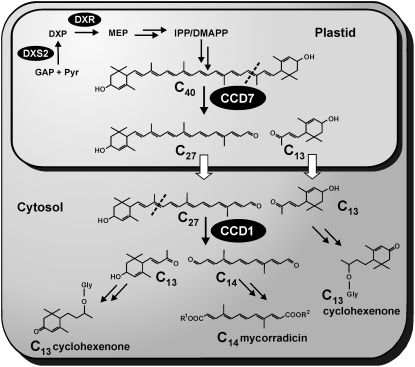Figure 9.
Proposed organization of C40 carotenoid formation and cleavage to apocarotenoids in a compartmentalized mycorrhizal root cell. C40 carotenoids (exemplified by lactucaxanthin as the tentatively proposed precursor for AM-induced apocarotenoids) synthesized inside plastids are proposed to be cleaved by plastidial CCD7 to one C27 aldehyde and one C13 ketone intermediate, which both can be exported into the cytosol in an unmodified or modified state (white arrows). The C27 intermediate in the cytosol is further cleaved by CCD1 to a C14 and a second molecule of C13, which are, together with the first C13 molecule, modified to yield the oxidized C13 and C14 apocarotenoids (cyclohexenone and mycorradicin derivatives) found in mycorrhizal roots. For abbreviations, see Figure 1.

